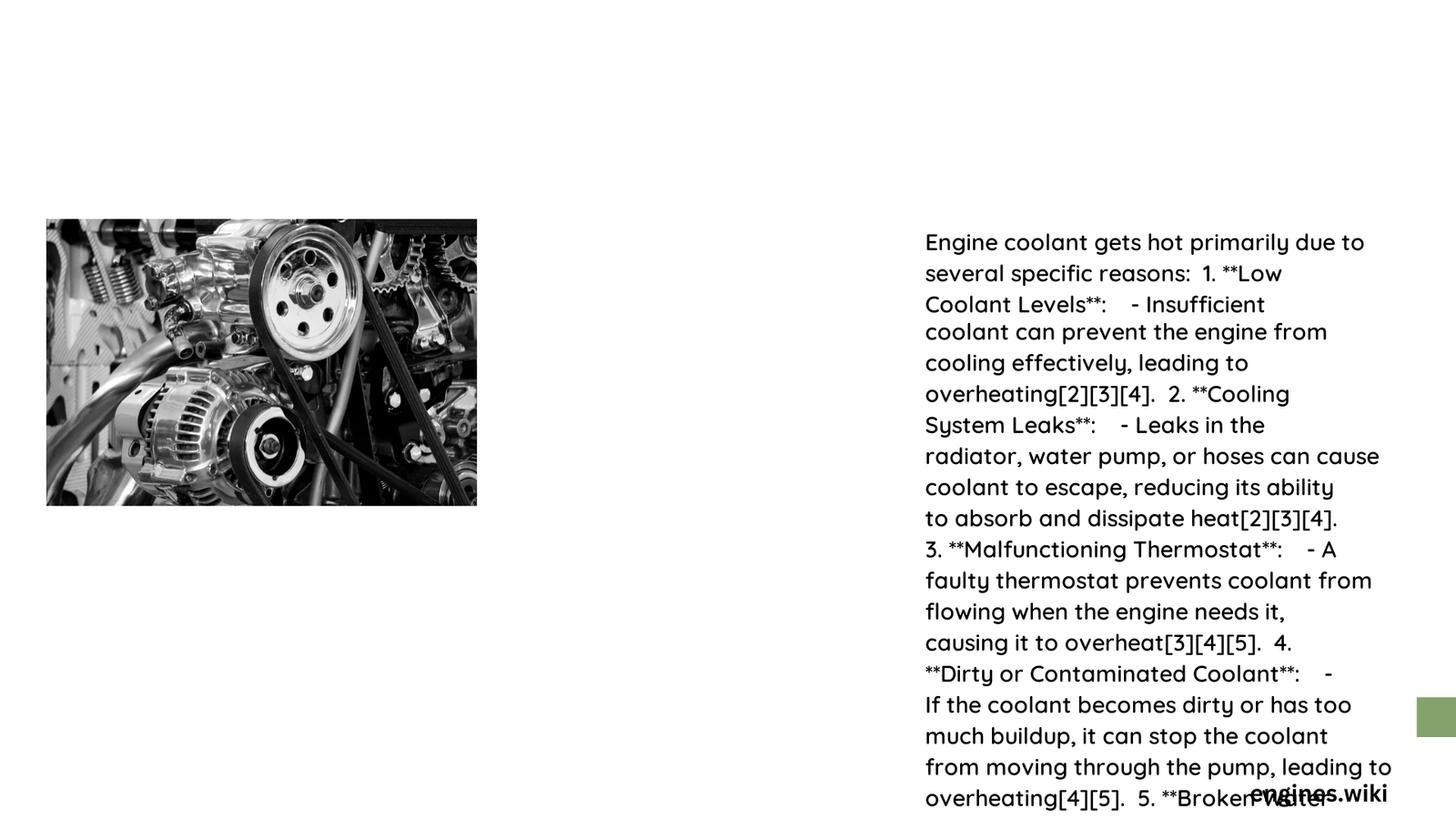Engine coolant transforms from a temperature-regulating fluid to a heat-saturated liquid through complex thermal interactions within automotive systems. Multiple interconnected mechanical and chemical factors contribute to coolant temperature escalation, ranging from system blockages and fluid degradation to mechanical component failures that disrupt normal heat transfer mechanisms.
What Causes Rapid Coolant Temperature Increase?
Chemical Composition and Heat Absorption Mechanisms
Engine coolant, primarily composed of ethylene glycol and water, serves a critical function in thermal management. Its molecular structure enables remarkable heat absorption and transfer capabilities. However, several technical factors can compromise this delicate thermal equilibrium:
Key Heat Generation Factors
- Combustion Process Inefficiencies
- Mechanical Friction
- Restricted Fluid Circulation
- System Component Degradation
How Do Cooling System Components Contribute to Overheating?
| Component | Potential Heat Generation Mechanism | Temperature Impact |
|---|---|---|
| Radiator | Blockage/Reduced Flow | +30-50°F |
| Thermostat | Mechanical Failure | +40-60°F |
| Water Pump | Impeller Damage | +25-45°F |
| Coolant Composition | Chemical Breakdown | +20-35°F |
What Triggers Immediate Coolant Temperature Escalation?
Coolant temperature rapidly increases when multiple systemic failures occur simultaneously. Primary triggers include:
- Low Coolant Levels
- Reduces heat dissipation capacity
- Increases localized thermal stress
-
Accelerates component wear
-
Contaminated Coolant
- Mineral deposit accumulation
- Reduced thermal conductivity
-
Increased internal system resistance
-
Mechanical System Failures
- Compromised water pump performance
- Thermostat valve malfunction
- Radiator core blockage
Technical Insights into Thermal Dynamics
The coolant’s molecular structure allows it to absorb substantial heat energy, typically managing temperatures between 195-220°F. When this range is exceeded, several critical processes occur:
- Molecular Expansion: Coolant molecules vibrate more intensely
- Reduced Heat Transfer Efficiency
- Potential Phase Transition Risk
Preventive Diagnostic Strategies
Implementing regular cooling system maintenance helps mitigate overheating risks:
- Quarterly Coolant Analysis
- Pressure System Testing
- Visual Inspection of Hoses/Components
- Thermal Imaging Diagnostics
Quantitative Temperature Thresholds
Normal Operating Range: 195-220°F
Warning Zone: 221-240°F
Critical Overheating: 240°F+
Conclusion: Holistic System Understanding
Understanding why engine coolant gets hot requires comprehensive analysis of interconnected mechanical, chemical, and thermal processes. Proactive maintenance and systematic diagnostics remain crucial in preventing catastrophic cooling system failures.

